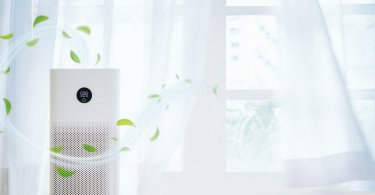Do you care about the health of your family?
Or maybe you just want to remove dust after repairing your home?
Whatever the reason, you definitely must know if air purifiers work and if they’re worth it. We will answer these questions in detail in our article. Air purifiers can be an expensive investment, so doing some research is a good idea.

Read also:
When we think of air pollution, we associate it with dirty smokestacks and chimneys. The Environmental Protection Agency (EPA) is constantly reviewing its findings on the health of the nation. Unfortunately, the findings have not uncovered much improvement when it comes to air pollution. Air purifiers are becoming more common for very good reasons.
Indoor Air Quality Facts & Statistics:
Indoor air quality is a top 5 public health risk according to the EPA.
Trapped air becomes stagnant. Combined with poor ventilation, the air quality in a living room can become toxic. This toxic air has many long-term chronic effects on the human body.
Where Do Toxins Come From?
Air fresheners, old furniture, paints, and fabrics are industrial culprits. These items release chlorinated tris, phthalates, benzene, and toluene.
These chemicals have a known effect on reproductive development and hormones in children. In adults, they manifest symptoms that exacerbate asthma. The asthma epidemic has impacted the general population. There are over 25 million asthma sufferers, and 6.1 million of these are children.
There are also biological toxins which include pet dander and different types of mold. The result of inhaling these toxins can include tiredness, coughing, nasal bleeding, and respiratory issues.
Protection From Allergies
Air pollution has become a factor in everyday life.
Allergies have also seen a rise as over 50 million people are now affected each year. They are the sixth leading cause of chronic illness in the USA according to the AAFA.
Pollen in the home can trigger reactions because the air carries pollen throughout the house. Breathing clean air is the best way to combat this type of allergy.
Another pollutant is dust in the air. Dust particles can linger due to poor ventilation. Poor ventilation allows pollutants to remain in the air for long periods of time. Air filters that are old and remain unchanged become ineffective, leaving the air contaminated.
Read More: Air Purifiers for Dust Allergies
Does Your Location Matter?
Both rural and urban locations have their own unique challenges.
Urban areas will have more industrial chemicals present; this will especially affect apartment dwellers. Building materials may be older so they will naturally be less efficient.
Nature will create challenges depending on the time of the year and the season. Pollen is the greatest contributor during the summer season. Having an air purifier provides a safe place from the outside world.
Are Air Purifiers Worth The Money?
Yes, they are able to trap a high percentage of airborne allergens and irritants that flow through the filters.
There have been many advances in the technology of air purifiers over recent years. They’re effective in a home environment as they remove dust, toxins, pet hair, and other substances. Air purifiers really work, leaving you free to breathe clean air.
The air quality of you and your family is vital and should be protected wherever possible.
There are many cost-effective solutions available on the market to purchase. The key thing to look for is that the model you choose includes a HEPA filter. This type of filter provides you with the highest level of protection available from an air purifier.
What is a HEPA filter?
The abbreviation HEPA stands for High-Efficiency Particulate Air.
Originally designed in the 1940s to protect scientists from radioactive particles, their efficiency in cleaning the air led to their incorporation into commercially used products. Effective HEPA filters can remove up to 99.97% of airborne particles. This includes both large and small varieties of particles, providing greater protection.
The filter functions in a way that traps particles before they settle on surfaces in the home. The filter also works without releasing any additional chemical products into the air.
How Do Air Purifiers Work?
The clean air delivery rate (CADR) required depends on the size of the space.
A bedroom sized 370-400 square feet needs a CADR of 150 to 250 cubic meters per hour. Larger living rooms usually require 250-350 cubic meters per hour. For coverage of a whole house up to 1200 square feet, a CADR of above 400 is suggested.
When we talk about the sizes of particles, we are covering everything from bacteria to pollen. Bacteria is measured at between 2.5 and 10 particle microns (PM). Pollen is measured at 10 microns and above. Air purifiers work to capture all the different sizes of these various particles.
Read Also: How Do I Know If My Air Purifier Is Working?
What Are The Real Benefits of Air Purifiers?
The main benefits of installing an air purifier are clean indoor air.
They catch visible and invisible particles that could aggravate your health. They work quickly and quietly to remove odors, pollen, and pet hair. Air purifiers can even remove cigarette smoke.
Wherever your home is, and no matter its size, air purifiers provide the best chance to protect your health. Peace of mind is something that you can’t put a value on.
Read Next:




